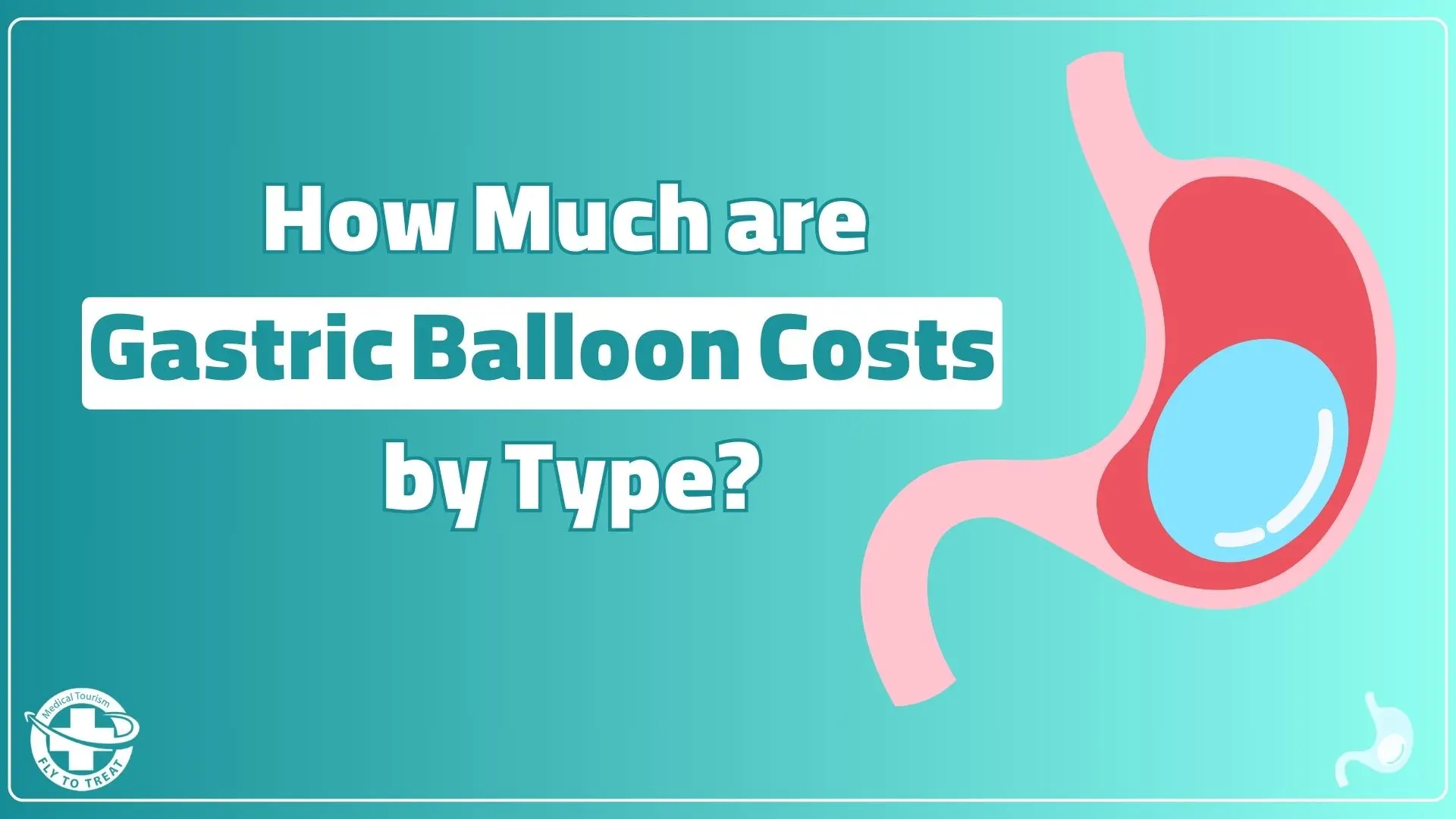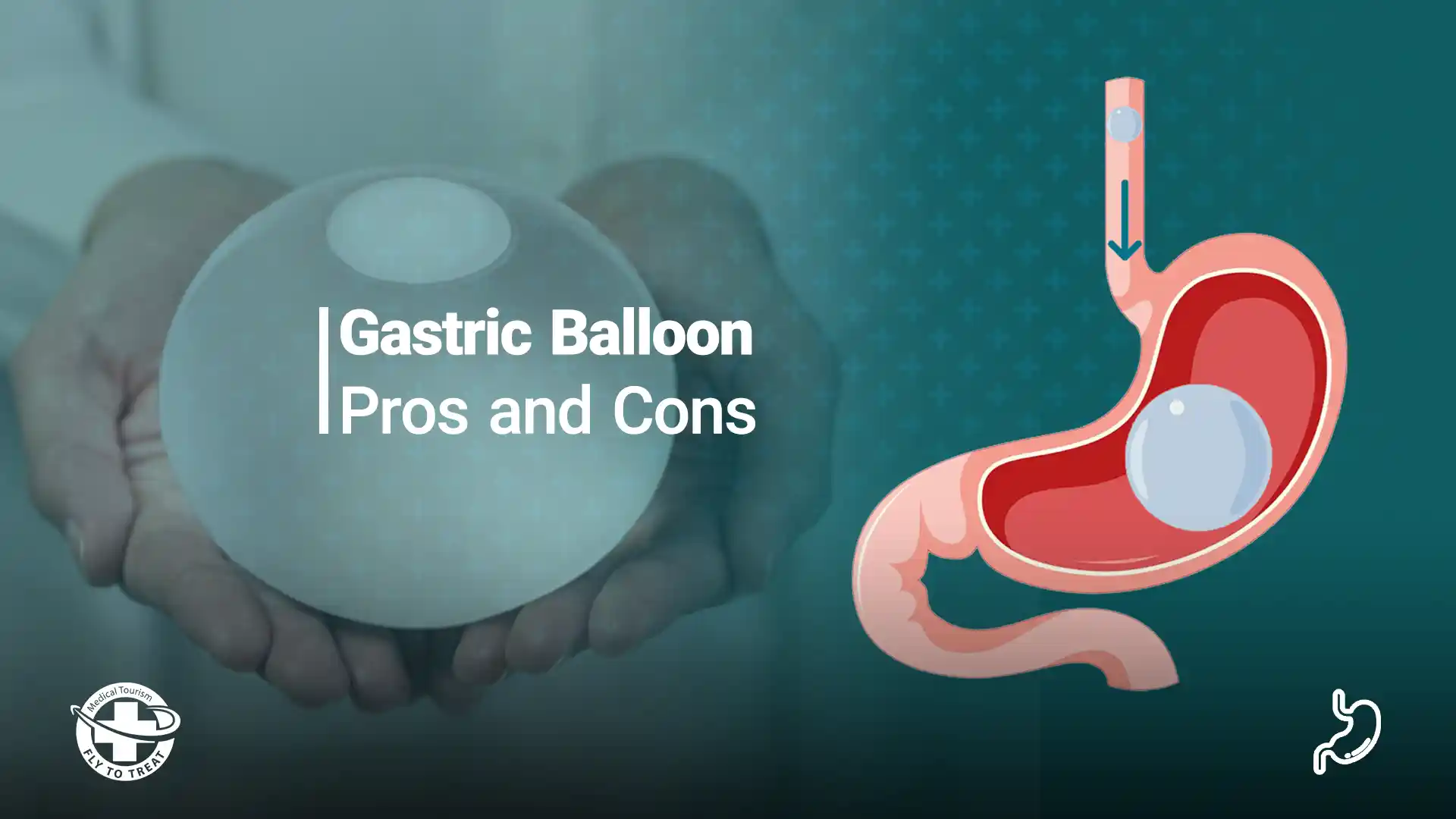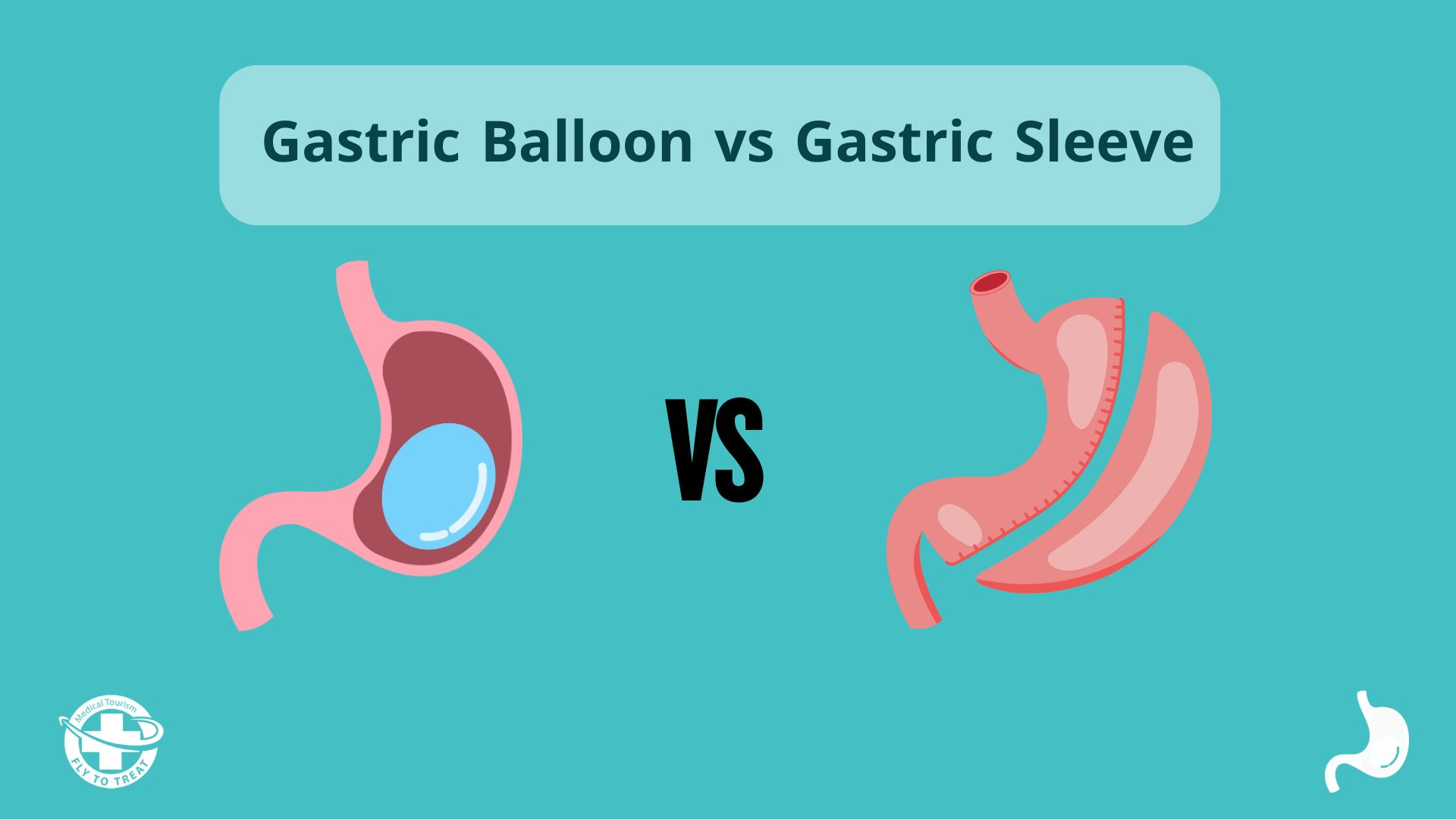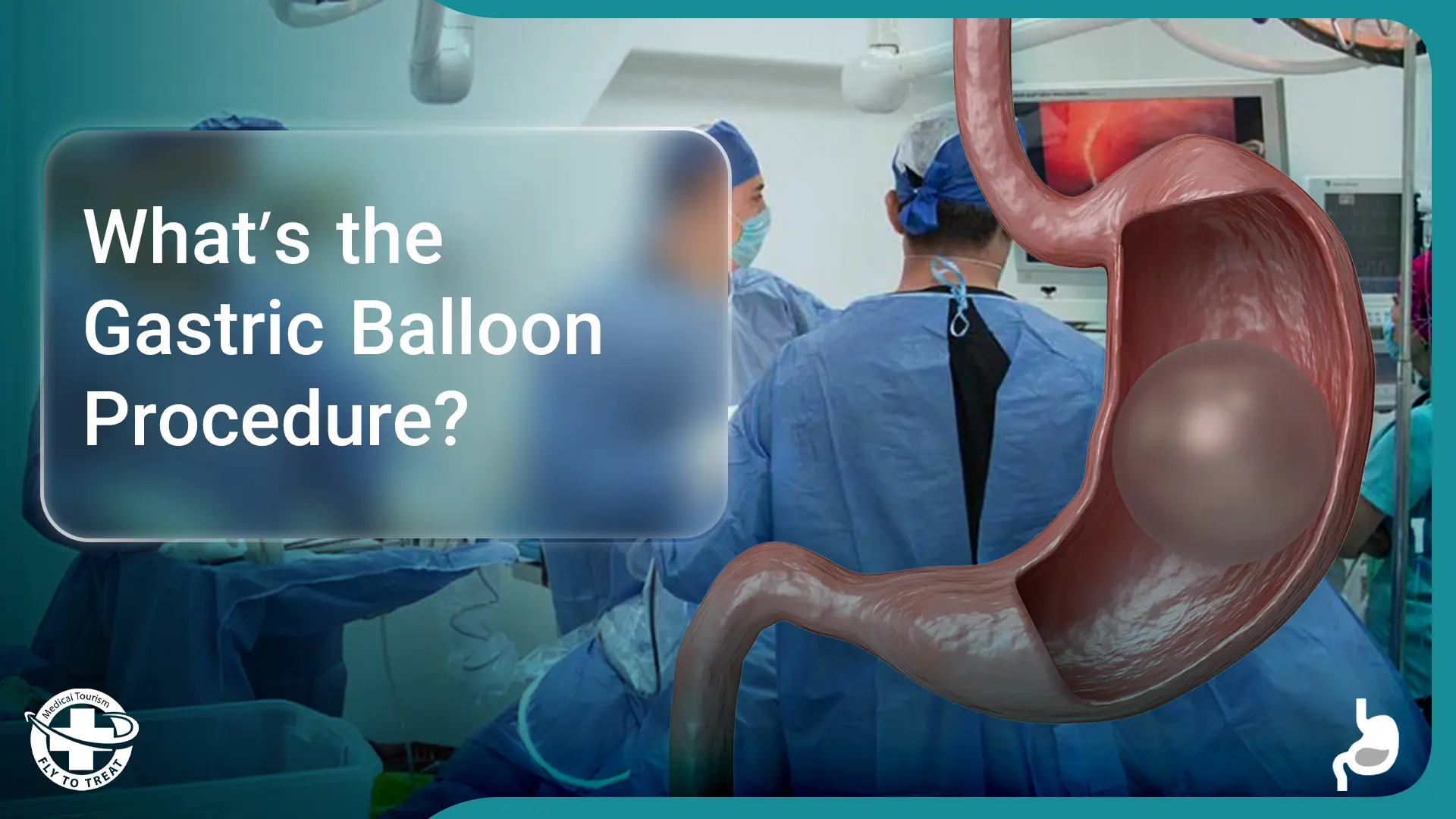
What’s the Gastric Balloon Procedure?
In a gastric balloon process, a silicone balloon filled with saline is inserted into your stomach as part of the weight-loss surgery known as "intragastric balloon placement." A balloon procedure for the stomach acts by restricting your food intake and increasing your feelings of fullness; this aids in weight loss. A gastric balloon process of insertion is a short-term, non-surgical technique.
If you're worried about your weight and diet and exercise haven't helped, you might want to consider the balloon in stomach procedure.
A balloon in stomach procedure demands a commitment to a healthy lifestyle, just like other weight-loss operations. To help assure the stomach balloon procedure's long-term success, you must adopt permanent, healthful dietary adjustments and engage in regular exercise.
You may want to learn about “Gastric Balloon vs Gastric Sleeve.”
Table of Contents
How Does a Gastric Balloon Work?
For obese individuals, the intragastric balloon is a less invasive medical method for weight loss. So, the answer to the question "What does an intragastric balloon do?" is that it combines a short-term medical implant with long-term dietary and lifestyle modifications. A balloon procedure for stomach refers to a medical professional's nonsurgical placement of an inflatable balloon into your stomach.
In a gastric balloon process, once the balloon is in place, the doctor fills it with saltwater to fill the stomach and make room for more food and liquids. The idea is to make you feel fuller more quickly after eating smaller meals and to keep you feeling fuller for longer so you don't become hungry in between meals.
What Is Gastric Balloon Surgery?
Gastric balloon surgery for weight loss, also known as intragastric balloon for weight loss, is a non-surgical weight loss procedure designed for individuals struggling with obesity who want a less invasive alternative to bariatric surgery. Unlike the gastric sleeve surgery, which is a surgery with side effects, the gastric balloon procedure involves placing a silicone or saline-filled balloon inside the stomach to create a feeling of fullness, thereby reducing food intake and aiding weight loss.
How Long Does Gastric Balloon Surgery Take?
Typically, this low-risk, non-surgical stomach balloon procedure takes half an hour. An intragastric balloon for weight loss takes up space in your stomach, which restricts how much you can eat and extends the feeling of fullness after meals, which can help you lose weight quickly. Combined with a healthy diet and regular exercise, the balloon helps make weight reduction and portion control easier to manage.
You don't need surgery to lose weight with the intragastric balloon technique. If food and exercise alone haven't worked for you and you're overweight or obese, this is an alternative.
What’s the Gastric Balloon Procedure?
The balloon-in-stomach procedure is an invasive outpatient process of inserting the balloon with an endoscope. It typically takes 15 to 20 minutes and is conducted in an endoscopy center.
During the procedure, the doctor uses an endoscope, which is a flexible, narrow tube-like camera equipped with lights, to place the balloon in the stomach. You will be sedated, ensuring you feel sleepy and comfortable throughout the process. While under sedation, you will lie on your side as the doctor carries out the procedure.
To place the balloon in the stomach, the doctor uses an endoscope, a flexible, narrow tube-like camera device equipped with lights.
The patient is sedated, so they feel very sleepy and comfortable. The doctor performs the procedure while the patient is under sedation and lies on the side.
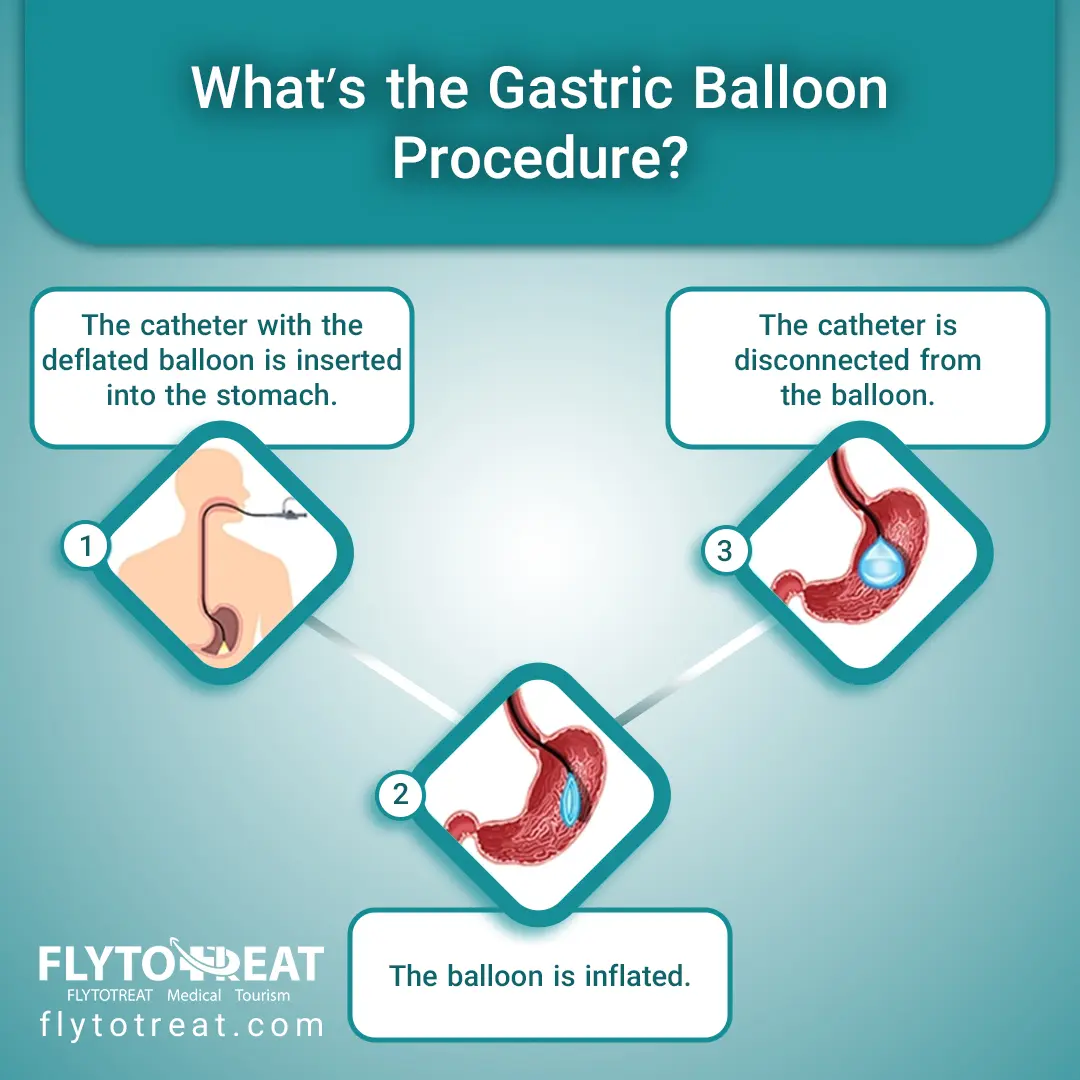
The summary of the stomach balloon procedure is as follows:
1. Insertion: A deflated balloon is inserted into the stomach through the mouth and esophagus using an endoscope (a thin, flexible tube with a camera).
2. Filling: Once inside, the balloon is filled with saline solution or gas, expanding to occupy space in the stomach.
3. Restriction: The balloon limits how much food the stomach can hold, making the patient feel full faster and eat less.
4. Temporary: The balloon remains in the stomach for about 6 months, after which it is removed.
Would you like to know, “Who is a Candidate for Gastric Balloon?”
What’s the New Balloon Weight Loss Pill Like?
The new balloon weight loss pill is an interesting development in the world of weight management treatments. It's a capsule containing a deflated balloon, which you swallow. Once the capsule reaches your stomach, it dissolves, and the balloon inflates. The inflated balloon takes up space in your stomach, which helps you feel fuller faster and eat less, contributing to weight loss.
Here's a general breakdown of how it works:
1. Swallowing the Capsule: The pill, which is designed to be swallowed easily, contains a deflated balloon inside. Once ingested, it travels down to your stomach.
2. Inflation: Once in the stomach, the balloon is filled with liquid, causing it to expand and take up space. This makes your stomach feel fuller than it normally would after eating, helping to curb hunger.
3. Weight Loss Effect: With the balloon occupying space in the stomach, people are likely to eat smaller portions, which reduces overall calorie intake. Over time, intragastric balloons for weight loss can contribute to significant weight loss, especially when combined with a healthy diet and exercise.
4. Temporary Solution: The balloon isn't meant to stay in your stomach forever. It's typically designed to remain for a few months before it deflates and is naturally passed out of the body.
The procedure is minimally invasive compared to other surgical weight loss options, like bariatric surgery. However, it still requires medical supervision and isn't suitable for everyone. In terms of gastric balloon pros and cons, side effects of intragastric balloon for weight loss may include nausea, bloating, or discomfort, especially in the early days after ingestion.
How Long Does a Gastric Balloon Stay in?
The intragastric balloon for weight loss is typically intended to remain in your stomach for six months. It's a non-surgical weight-loss treatment in which a deflated balloon is inserted into the stomach and filled with saline to help reduce the stomach's capacity.
After 6 months, the balloon is usually removed to prevent complications, as it can start to lose its effectiveness and might cause discomfort or other issues if left in longer.
In some cases, depending on gastric balloon costs by type and the specific recommendations from the medical professional, the balloon might be left in for a shorter or slightly more extended period. But 6 months is the general guideline.
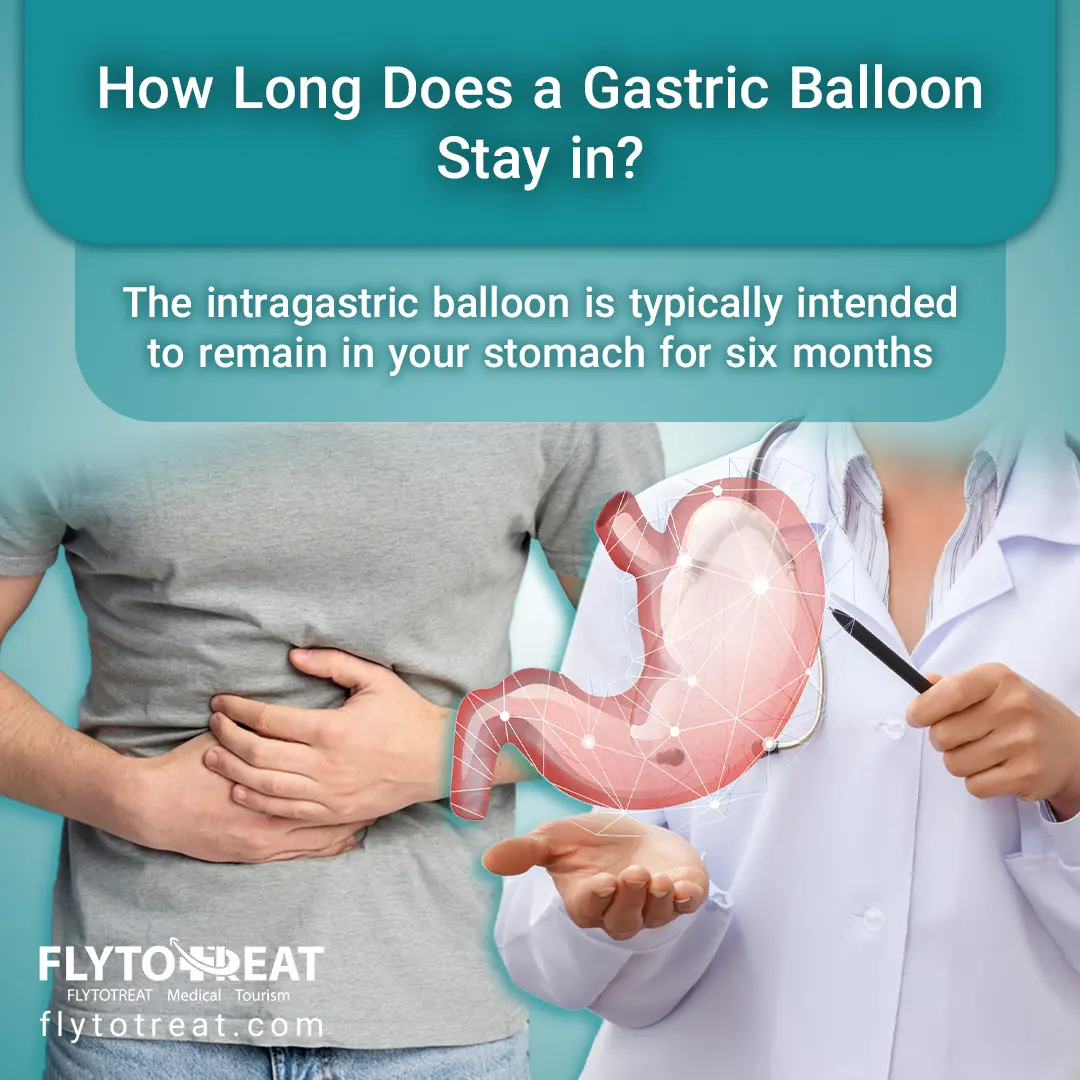
You can get free consultation from FlytoTreat so that the consultants tell you which type of intragastric balloon is the best for you. Click Here
How To Remove a Gastric Balloon?
Once you finish the treatment program or your physician advises it, the balloon can be removed. This straightforward procedure lasts approximately 20 minutes and follows similar steps to the initial placement of the balloon.
To extract a gastric balloon, the physician will:
1. Sedate you to ensure your comfort.
2. Insert an endoscope into your stomach via the mouth.
3. Puncture the balloon and use a catheter to remove the saline.
4. Employ the endoscope to capture the deflated balloon.
Conclusion
The balloon procedure for stomach offers a less invasive and effective alternative for individuals struggling with obesity. By inserting a silicone balloon into the stomach, this non-surgical treatment helps limit food intake. It promotes a feeling of fullness, making it easier to manage portion control and ultimately lose weight.
However, successful results depend on the patient’s commitment to maintaining a healthy diet and regular exercise. Though temporary, the balloon is helpful for those seeking a weight-loss solution. If you believe you may benefit from this treatment, consulting with a medical professional can help determine if the gastric balloon procedure is right for you.
MEDICALLY REVIEWED BY: Dr. Ali Bazazi
AUTHOR: FlytoTreat's team of Authors
19 February 2025 - Updated At: 19 February 2025
Related Articles
Related Services
Comment










